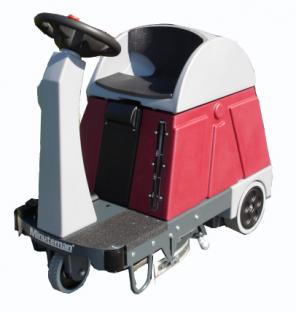How Floor Scrubbers Can Prevent the Spread of Nosocomial Diseases
Many people think that a hospital is the last place where they can catch a disease. After all, a hospital is the first place they go to when they need treatment. However, professionals in the health industry know that the truth is more nuanced that this.
While hospitals try their best to keep the premises as sanitary as possible, there’s always the risk of a patient contracting a nosocomial disease–otherwise known as a hospital acquired disease–especially if they are confined for prolonged periods.

Hospital Acquired Diseases: A Closer Look
According to the Centers for Disease Control (CDC), about 1 in 20 American patients (or about 5%) will get a hospital acquired disease during their stay. However, this phenomenon is not confined only to U.S. hospitals; Kalorama Information, an independent medical market research firm, says that nosocomial infections affect between 3.5% to 12% of all admissions in developed countries.
Given this rate, a $14.5 billion industry has sprung up around addressing nosocomial diseases, which includes not just the actual treatment of patients but also the sanitation of facilities and instruments. Needless to say, it’s the hospitals who have to foot the very hefty bill.
Unexpected but Not Unavoidable
According the CDC, the most common nosocomial infections are often caused by bacterial pathogens like E. coli, Staphylococcus aureus, and Pseudomonas aeruginosa. These, among others, can cause a wide variety of illnesses, such as respiratory pneumonia, gastrointestinal problems, and urinary tract infections. Even more concerning, such conditions are reported to cause up to 75,00 deaths a year in American hospitals.
Given that the leading cause of such infections are pathogens, one cannot overstate the importance of sanitation in hospital premises. Indeed, there are many ways to reduce the occurrence of hospital acquired diseases, such as renewed focus on hand hygiene and using copper equipment to reduce transmission of microbes.
Tools Matter, Too
Floor scrubber suppliers like Minuteman International also emphasize that the type of cleaning equipment a hospital uses can go a long way towards minimizing nosocomial infections. For instance, the H20 compact dish brusher, one of the floor scrubbers for sale offered by the firm, is especially designed for healthcare facilities. One of its key features is its anti-microbial recovery tank, which has a 99% kill claim for bacteria like E.Coli and Staphylococcus aureus, and thereby greatly reduces the possibility of cross contamination.
Indeed, nosocomial diseases are a real and constant threat to both hospitals and patients around the world. But with proper hygiene protocols and the proper cleaning equipment, their occurrence can be meaningfully decreased.
Sources
Kalorama: Not Surprisingly, Growth In Hospital Infections Leads to Revenues for Control Companies, www.prnewswire.com
Nosocomial Infections & Hospital-Acquired Illnesses – Overview, www.ehagroup.com
5 ways to reduce hospital-acquired infections, www.fiercehealthcare.com
